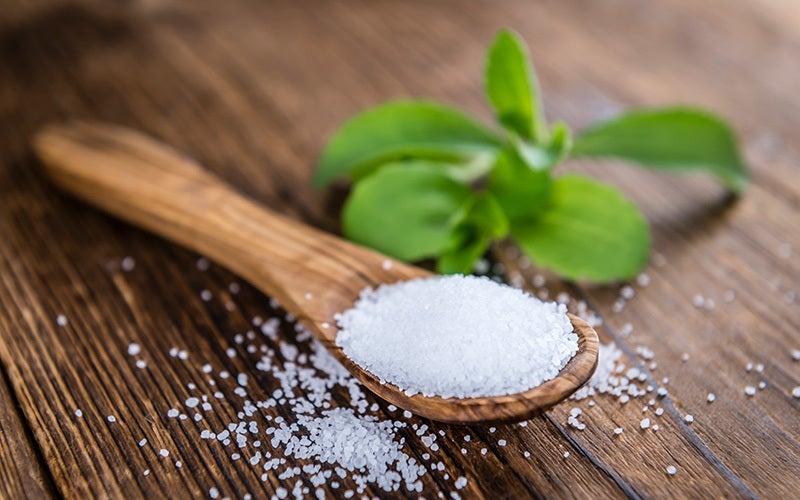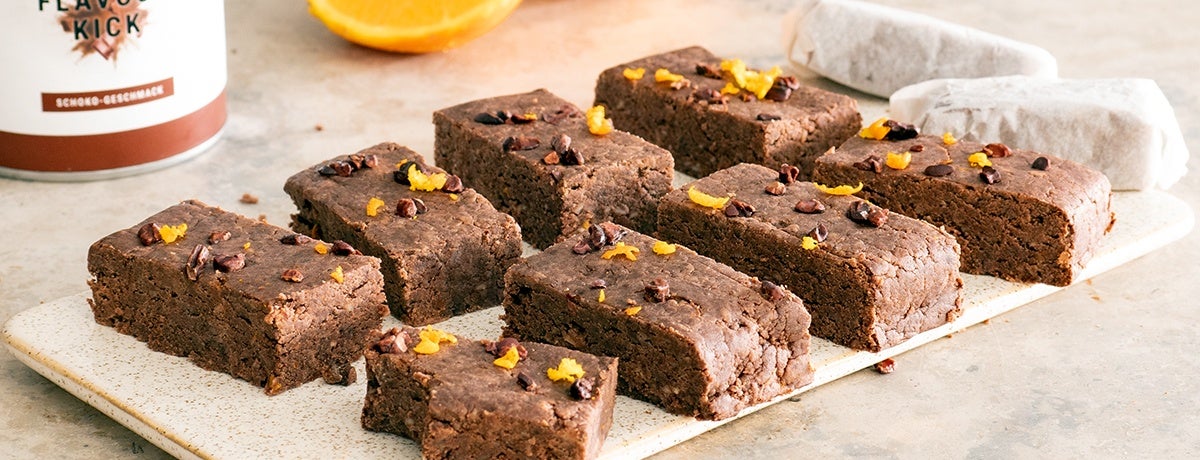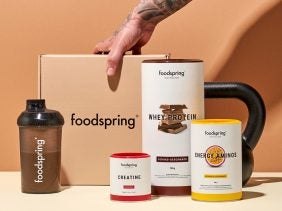Stevia: What’s behind this sugar substitute?
 ©alina rosanova
©alina rosanova
As more and more people try to eliminate sugar from their diets, stevia gets more and more attention. The sugar-free, low-calorie sweetener is said to be a natural way to make healthy food taste sweeter, but exactly how natural is it? And is it as great as many people say it is?
What is stevia?
As more and more scientific evidence suggests that consuming sugar can have negative side effects, numerous sugar-free sweeteners have hit the market. One of those sweeteners includes stevia, which has been revolutionizing the food industry since it was approved to sell in the EU in 2011. Since then, however, this controversial product has been the subject of many questions. Many people claim that stevia makes their life easier, but is it really healthier than regular sugar? And it really doesn’t have any calories? Most importantly, though, does it actually taste the same?
Before we dive in, here’s a quick summary: Stevia is a natural sweetener that is ideal for shakes and desserts, but can also be used in cooking and baking. It’s commercially available in liquid or powder form.
What you need to know about the stevia plant
The stevia we know is a mixture of substances extracted from the plant Stevia rebaudiana. It’s also called “water hemp” or simply “stevia” and belongs to the Asteraceae family. Originally from Paraguay, the stevia plant was discovered during the Spanish conquest and then brought back to Europe. It now grows in many countries, including Brazil, Argentina, Ethiopia, India and China. This sweet grass is particularly popular in sunny, hot and humid regions where it grows most easily.
Its sweet leaves contain sweet-tasting compounds called steviol glycosides. Since the end of 2011, these have been the subject of increasing attention, because that’s when they were approved in the EU to be used as food sweetener E960.

Before stevia is ready to hit supermarket shelves, steviol glycosides are first extracted from the leaves of the raw stevia plant through a process of drying the leaves, soaking them in hot water, and putting them through multiple stages of filtering. Because the resulting steviol glycosides are 300 times sweeter, food additives are only allowed to contain a small amount of them according to consumer associations.
Additionally, steviol glycosides can be used to manufacture certain unsweetened products, like candy, chewing gum, jam, yogurt and cereal.
What’s the difference between stevia and sugar?
Even though it might be hard to believe, stevia actually has a more powerful sweetness than table sugar. With a slight bitterness and hint of licorice, it does have a slightly different taste, though.
The other difference between the two can only be perceived in a lab. Though you can’t tell from just looking at it, stevia is low calorie and inhibits the growth of cavity-forming bacteria, unlike its traditional counterpart. Steviol glycosides also have a low impact on blood sugar levels in comparison.
Is stevia really healthy?
Most people know stevia as a sweetener that is both natural and healthy. In fact, it’s been used as a remedy for millenia by the indigineous populations of South America for numerous ailments, including heartburn and hypertension.
But just because it appears to be natural and healthy doesn’t mean it always is. As steviol glycosides are extracted from the stevia plant, many important compounds are lost during the industrial process. Because of that, the stevia we know has almost nothing to do with the crude stevia that exists in nature. And whether or not the sweetener available in grocery stores retains any of the medicinal benefits of the plant remains hotly debated by experts.
Does stevia have side effects?
Stevia has been the subject of a lot of research and discussion in the science world. For a time it was suspected to be harmful and even carcinogenic.
However, the studies that seemed to show this revealed that the quantities of stevia administered to the animals being tested were extremely high. Subsequent studies that used much smaller quantities then showed that the sweetener had no negative health repercussions.
It’s these studies that enabled the European Food Safety Authority to authorize its commercial distribution.
As long as you don’t exceed the recommended daily intake of four milligrams per kilogram of body weight, stevia is generally recognized as safe.
Does stevia have calories or not?
Different stevia products have different nutritional information, including the amount of calories they contain. Liquid versions of stevia can contain six calories per 100 milliliters depending on the brand. If you take a look at the nutritional values of different stevia products, you can see how different their calorie content is. Powdered stevia products contain between zero and 375 calories per 100 milligrams.
The numbers don’t match up because they may have different chemical composition and contain different fillers, such as additional sugars or other artificial sweeteners. Some contain the polysaccharide maltodextrin, while others contain erythritol, a sugar alcohol that is also virtually calorie-free. To be sure what you’re getting, always check the ingredients list first!
How to use stevia for baking
Stevia is a huge boon for avid bakers that are trying to cut down on sugar because it’s heat resistant. But because its sweetness is more powerful than table sugar, you should use a smaller quantity than what you normally might.
In a classic cake batter, on the other hand, a high proportion of conventional sugar is used, but it would be inedible with the same dosage of stevia.
It’s also important to consider that baking something with stevia will give it a completely different consistency than conventional sugar. Before you start using, be sure to research which stevia products are best for baking so you get the results you want. Look for options that contain fillers and diluents and are easy to dose.
Are you trying to cut out sugar but still looking for recipes to satisfy your sweet tooth? These delicious sugar-free recipes have got you covered.

In conclusion, it is possible to bake with stevia, but you definitely don’t have to. In fact, it produces a special flavor in cakes, cookies, and other pastries that takes a bit of time to get used to. Start small, test it out slowly, and see how comfortable you become using it over time. If you’re already a licorice fan, though, you might enjoy it right away!
Stevia: Our conclusion
- Stevia is known to be a natural sweetener.
- Steviol glycosides are extracted from the stevia leaf and have a sweet but slightly bitter taste.
- The sweetness of stevia is much more powerful than that of conventional sugar.
- Avoid consuming more than the daily recommended amount of four milligrams of stevia per kilogram of body weight.
- Along with being sugar-free, this sweetener is low in calories and does not cause cavities.
- Stevia is heat resistant and can therefore be used in pastries. But it’s all a question of dosage!
Sources for this article
We at foodspring use only high-quality sources, including peer-reviewed studies, to support the facts within our articles. Read our editorial policy to learn more about how we fact-check and keep our content accurate, reliable, and trustworthy.








